You’re about to begin on a journey to grow delicious jalapenos from seeds indoors, and with the right steps, you’ll be enjoying those spicy peppers in no time.
First, you’ll need to choose the right seeds, ones that are resistant to disease and mature quickly.
Then, you’ll prepare a dedicated growing space with precise climate control and air purification.
But that’s just the beginning – you’ll need to create the perfect environment, from soil to light, for your seeds to thrive. And that’s where the real challenge begins.
Let’s get started.
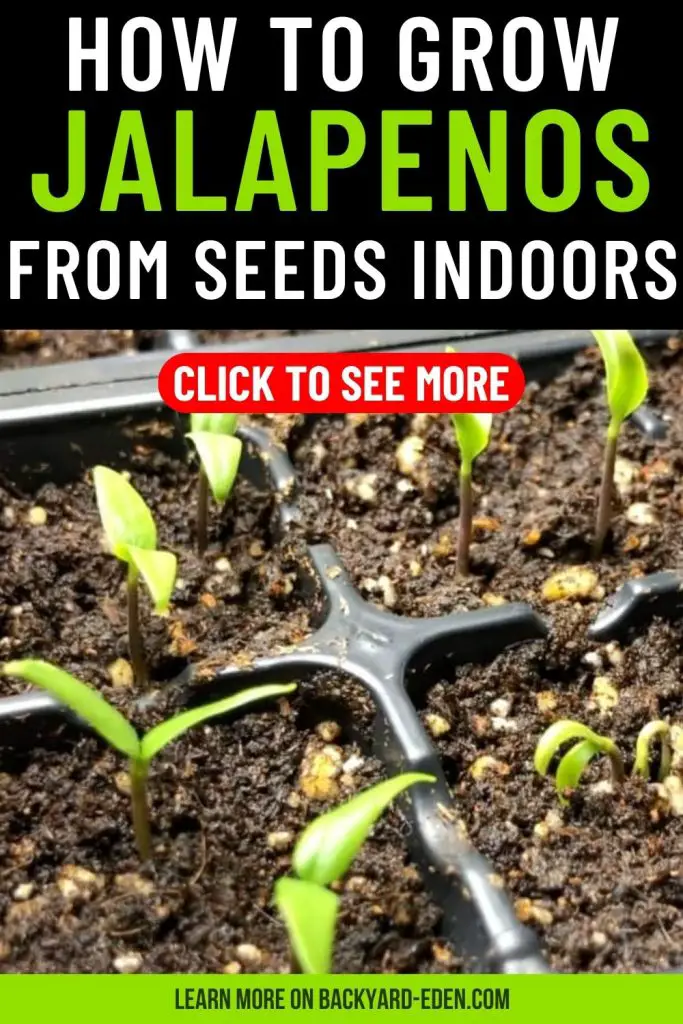
Key Takeaways
- Choose indoor cultivation jalapeno varieties that are disease-resistant and quick-maturing, suitable for containers.
- Set up a dedicated space with climate control, air purification, and good air circulation to maintain consistent temperature and humidity.
- Use high-quality seed starting mix with good drainage, and sow seeds at 1/8 inch depth, covering them with a thin soil layer.
- Maintain optimal temperature conditions of 75-85°F for germination, and provide consistent light cycles using reflective surfaces and LED grow lights.
- Water seedlings with room-temperature water, avoiding overwatering, and fertilize with balanced nutrients at half strength to promote healthy growth.
Choosing the Right Jalapeno Seeds
When selecting jalapeno seeds for indoor growing, you’ll want to opt for varieties bred specifically for container production or indoor cultivation, as they’ll inherently possess traits that enhance their performance in controlled environments. These varieties have been developed to thrive in smaller spaces and can tolerate the unique conditions of indoor growing.
For instance, you may consider hybrid options like ‘Patio’ or ‘Tiny Tim’, which are compact, produce smaller fruits, and are resistant to diseases.
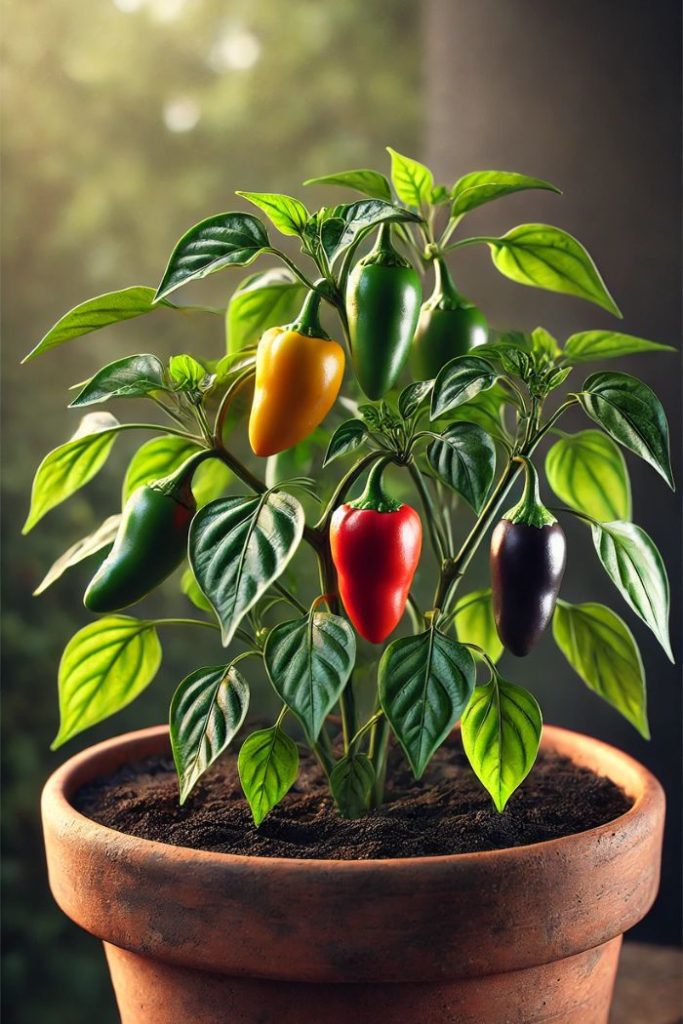
These seed varieties are ideal for indoor growing, as they’re more manageable and require minimal support. Additionally, they mature quickly, allowing you to harvest your jalapenos within 70-80 days.
Other seed varieties, such as ‘Early Jalapeno’ or ‘Jalapeno M’, are also suitable for indoor growing. These varieties have been bred for their high yields, disease resistance, and ability to thrive in containers.
Preparing the Growing Environment
You’ll need a dedicated growing space with specific conditions to optimize jalapeno seed germination and growth, which can be replicated indoors with the right equipment and setup. To create an ideal environment, consider investing in a grow tent or a grow room with climate control capabilities. This will allow you to regulate temperature, humidity, and light exposure to mimic the best conditions for jalapeno growth.
Air purification is also essential to prevent fungal diseases and ensure healthy plant development. You can achieve this by incorporating air purification systems or fans with HEPA filters to remove airborne contaminants. Maintain good air circulation by keeping a distance of at least 6-8 inches between the plants and the walls of the growing space.
Maintain a consistent temperature between 75-85°F (24-29°C) during the day and around 65-70°F (18-21°C) at night. Humidity levels should be kept between 50-60% to promote healthy root development.
Selecting the Best Soil Mix
Choose a high-quality seed starting mix specifically designed for indoor growing, as it will provide the ideal balance of water retention, drainage, and aeration for your jalapeno seeds. This type of mix is formulated to promote healthy seedling development, which is essential for growing strong and vigorous jalapeno plants.
Look for a mix that contains a blend of peat moss, vermiculite, and perlite, as these ingredients provide excellent moisture retention, soil aeration, and drainage. A well-balanced mix will help prevent waterlogged soil, which can lead to root rot and other diseases. You’ll want a mix that can hold just the right amount of moisture, allowing your seeds to germinate and grow steadily.
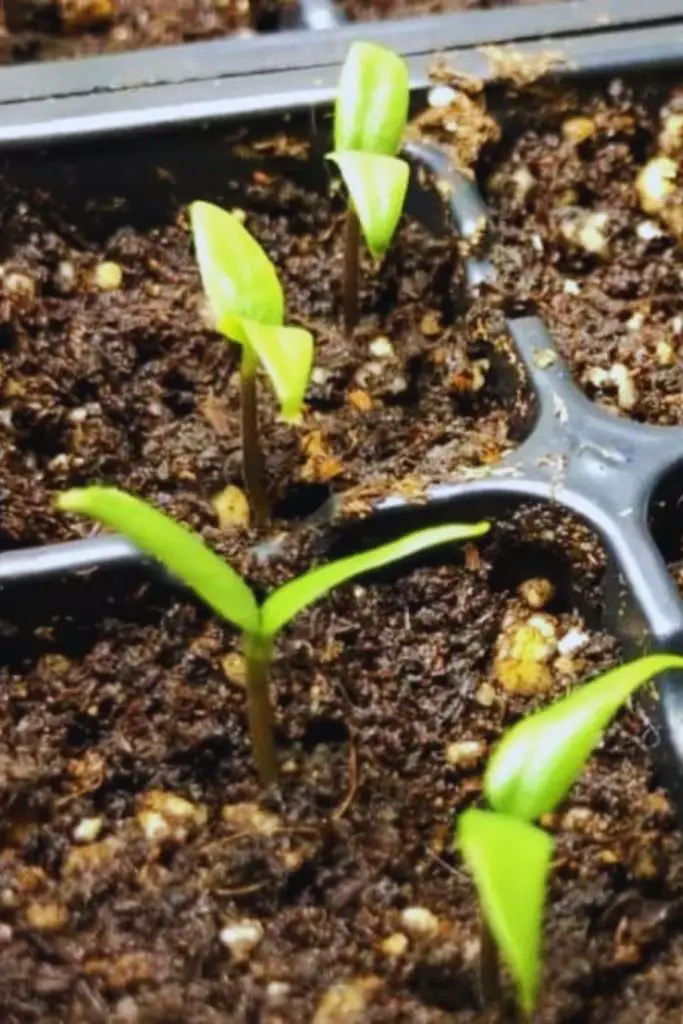
When selecting a soil mix, be sure to read the label and avoid mixes containing added fertilizers, as these can be too strong for your young jalapeno seedlings. By choosing the right soil mix, you’ll be giving your jalapeno seeds the best possible start in life.
Sowing Seeds at the Right Depth
When sowing jalapeno seeds indoors, you’ll want to get the depth just right.
The seed’s position in the soil affects its ability to germinate, so it’s essential to understand the importance of soil coverage.
Seed Depth Matters
Sowing jalapeno seeds at the proper depth is essential, as planting them too deeply can cause them to rot before germination or too shallowly can leave them vulnerable to drying out. When you’re starting seeds indoors, it’s important to get the depth just right. A general rule of thumb is to plant seeds at a depth of 1-2 times their diameter. For jalapeno seeds, which are relatively small, this translates to about 1/8 inch deep. You can also use the seed packet as a guide, as many will provide specific depth recommendations.
To achieve ideal depth control, you’ll want to use a seed starting mix that’s designed for indoor growing. These mixes are typically lighter and more porous than regular potting soil, allowing for better drainage and aeration.
When filling your seed trays or small pots, gently firm the mix to create a stable surface. Then, using a small utensil or your finger, create a tiny indentation in the soil. Place one jalapeno seed in each indentation, and gently cover it with a thin layer of the seed starting mix.
Soil Coverage Importance
By carefully regulating the amount of soil covering your jalapeno seeds, you’ll create an environment that fosters healthy germination and minimizes the risk of rot or drying out. The essential soil coverage is vital, as it directly affects seedling development.
A general rule of thumb is to cover the seeds with a layer of soil that’s 2-3 times the thickness of the seed itself. This guarantees the seed receives adequate moisture and oxygen while preventing overwatering.
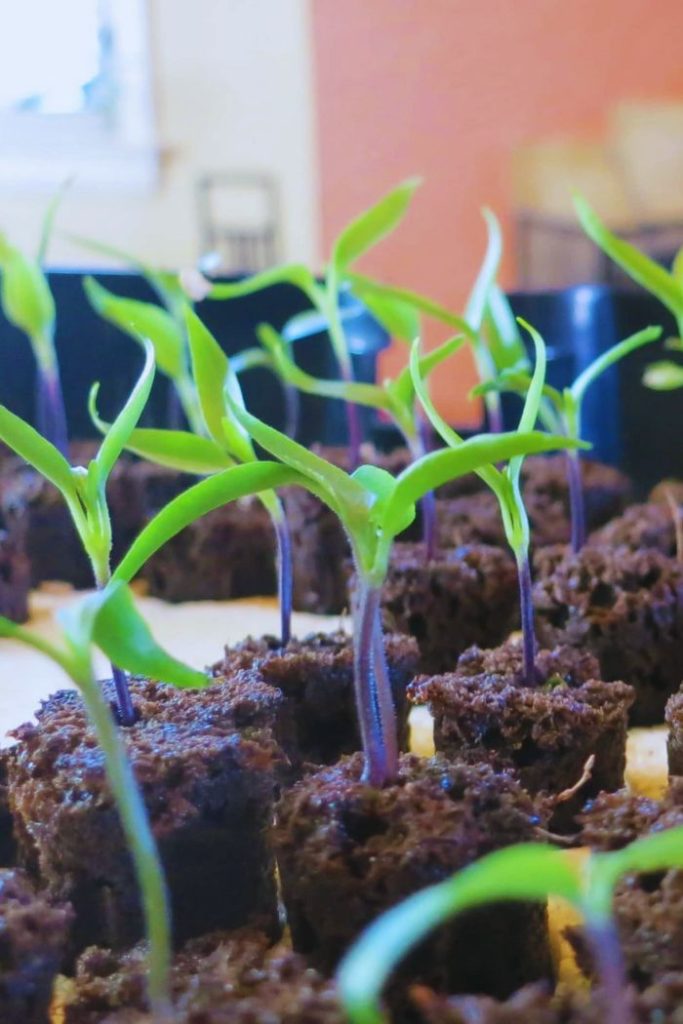
Soil density also plays a significant role in seed germination. A well-balanced soil mix with a density of around 1-2 g/cm³ allows for ideal water penetration and aeration. This, in turn, promotes healthy root growth and strengthens the seedling.
Aim for a coverage ratio of 1:2 to 1:3 (soil:seed), ensuring the soil is firmly packed but not compacted. By maintaining this delicate balance, you’ll provide your jalapeno seeds with the perfect conditions to thrive.
Depth Affects Germination
You’ll greatly enhance your chances of successful germination by planting the seeds at a perfect depth, as even a slight deviation from the best range can dramatically impact seedling emergence and development. Jalapeno seeds typically require a depth of about ¼ inch (6-8 mm) to guarantee ideal germination.
Sowing them too deeply can lead to poor seedling vigor, as the seedlings may struggle to reach the surface. On the other hand, planting them too shallowly can cause them to dry out or be vulnerable to soil density fluctuations.
When planting, gently firm the soil around the seed to ensure good contact. Aim for a consistent soil density to promote even germination. You can check the soil density by gently pressing the soil with your finger; it should feel firm but not compacted.
Providing Optimal Temperature Conditions
Jalapeno seeds germinate best within a specific temperature range of 75°F to 85°F (24°C to 29°C), making it vital to maintain a consistent and controlled environment for ideal seedling growth. You’ll want to make sure your indoor growing space stays within this range to encourage healthy sprouting.
Thermal fluctuations can be harmful to seedlings, so it’s important to regulate the temperature. Avoid placing your seed tray near heating vents, radiators, or air conditioning units, as these can cause sudden temperature swings. Heat waves, in particular, can be devastating to young seedlings. To mitigate this risk, consider using a space heater or thermostat to maintain a stable temperature.
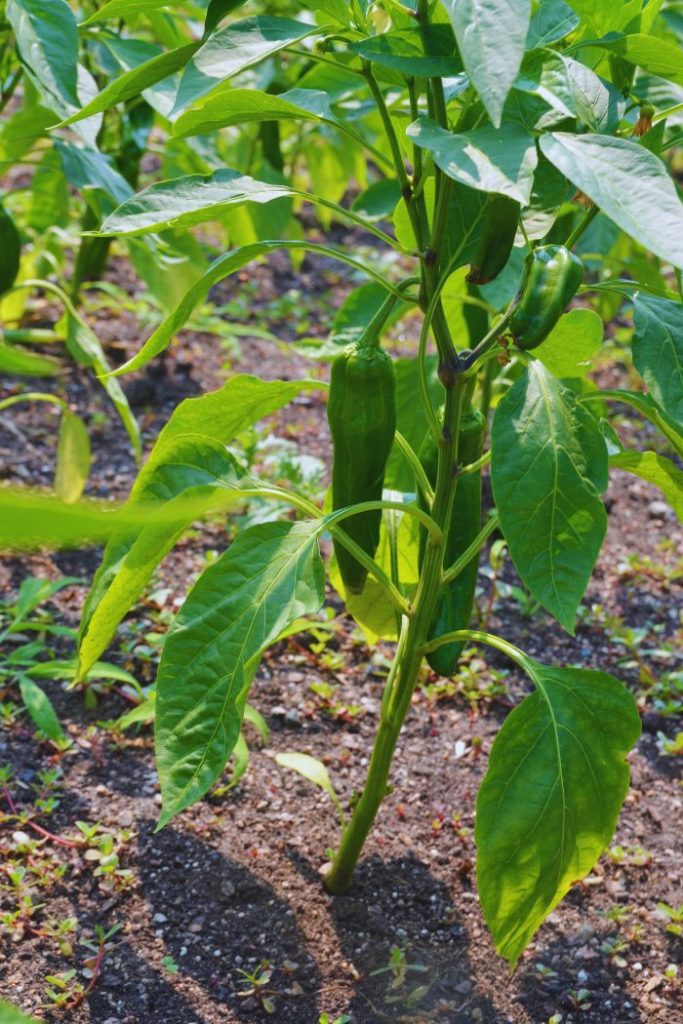
You can also use a thermometer to monitor the temperature and make adjustments as needed. By providing a consistent temperature, you’ll be giving your jalapeno seeds the best chance to germinate and thrive.
Ensuring Adequate Light Exposure
As you progress with growing jalapenos from seeds indoors, you’ll need to make sure your seedlings receive sufficient light exposure to promote healthy growth.
You’ll have two primary options to contemplate: utilizing natural light sources or investing in artificial lighting solutions.
Natural Light Options
When starting seeds indoors, ensuring sufficient light exposure is essential, and placing them in a south-facing window that receives direct sunlight for at least 4-6 hours daily is a viable option. This window orientation allows your jalapeno seeds to receive the intense light they need to grow.
However, it’s imperative to take into account the time of day and season, as direct sunlight can be too intense during peak summer hours. To mitigate this, you can use a sheer curtain to filter the light.
Another critical aspect to take into consideration is light reflection. You can maximize the available natural light by placing a reflective surface, such as aluminum foil or a mirror, opposite the window. This will help bounce light onto the seeds, ensuring they receive adequate exposure.
Artificial Lighting Solutions
To supplement or replace natural light, you can employ artificial lighting solutions, which come in various forms, including LED grow lights, fluorescent lights, and HPS (high-pressure sodium) grow lights, each with its unique characteristics and benefits for indoor jalapeno cultivation.
LED grow lights, for instance, are energy-efficient and emit minimal heat, making them an ideal choice for indoor growing. They’re also available in different spectrums, allowing you to customize the light to your jalapeno plants’ specific needs. As an alternative, you can opt for LED alternatives, such as induction grow lights or plasma grow lights, which offer similar benefits.
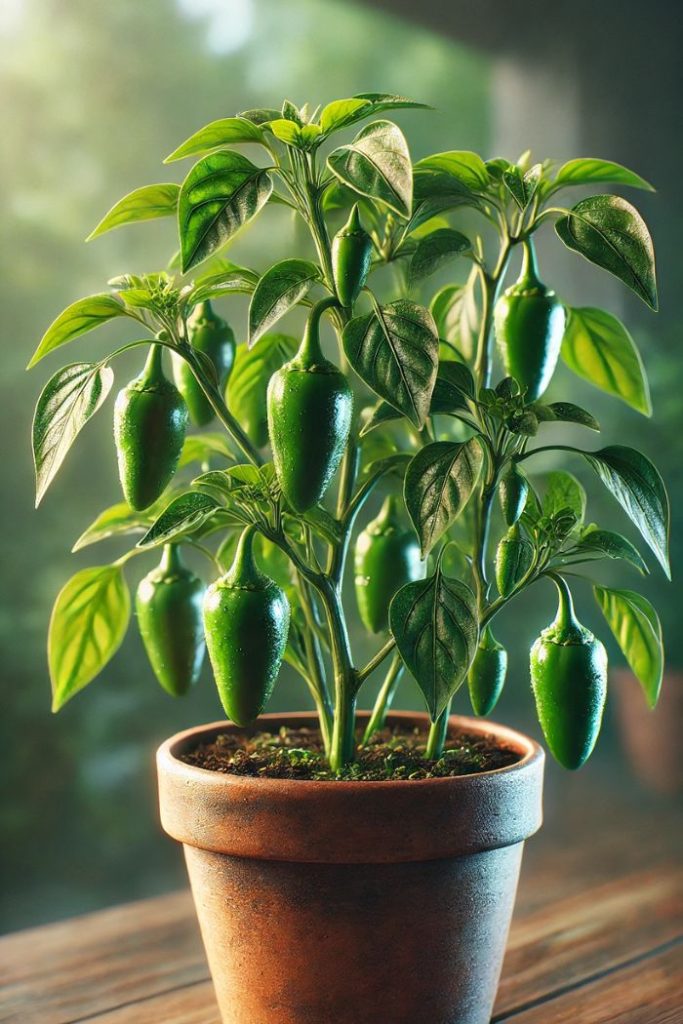
When using artificial lighting, it’s essential to maintain a consistent light cycle. Jalapeno plants typically require 18 hours of light and 6 hours of darkness during the seedling stage. As they mature, you can gradually reduce the light cycle to 12 hours of light and 12 hours of darkness.
Watering and Humidity Control
You’ll need to maintain a consistent moisture level in the soil, keeping it consistently moist but not waterlogged, as jalapeno seeds require a delicate balance of hydration to germinate and grow. Overwatering can be detrimental, causing seeds to rot, while underwatering can lead to poor germination rates.
To achieve the best moisture level, you’ll need to monitor the soil daily, checking the top inch of soil for dryness. Water your jalapeno seeds with room-temperature water, avoiding cold or hot water that can shock the seeds. Use high-quality water with a neutral pH to prevent any potential nutrient deficiencies.
For ideal humidity control, consider using a misting system to maintain a humid microclimate around your seeds. A mist frequency of 2-3 times a day should provide the necessary moisture without overwatering.
Fertilizing Jalapeno Seedlings
As you nurture your jalapeno seedlings, you’ll need to provide them with the necessary nutrients to promote healthy growth.
You’ll want to guarantee your seedlings receive a balanced diet of macronutrients like nitrogen, phosphorus, and potassium, as well as micronutrients like calcium and magnesium.
Soil Nutrient Balance
Fertilizing jalapeno seedlings requires a vital balance of nutrients in the soil to promote healthy growth and development. You’ll want to guarantee your seedlings receive the right proportions of macronutrients (nitrogen, phosphorus, and potassium) and micronutrients (like calcium, magnesium, and sulfur).
Aim for a balanced fertilizer with a nutrient ratio of 10-10-10 (nitrogen-phosphorus-potassium) or 20-20-20 for best growth.

pH levels also play an essential role in nutrient uptake. Jalapeno seedlings thrive in slightly acidic to neutral soil pH, ranging from 6.0 to 7.0. If your soil pH is too high or too low, it can lead to nutrient deficiencies and stunted growth. You can adjust the pH levels by adding lime to raise the pH or peat moss to lower it.
When selecting a fertilizer, look for products specifically formulated for seedlings or indoor gardening. These products typically contain micronutrients and are balanced to promote healthy root development and leaf growth.
Nourishing Young Plants
When watering your jalapeno seedlings, feed them a balanced fertilizer at half the recommended strength to avoid burning their tender roots. This will provide essential nutrients for healthy growth. Start fertilizing once your seedlings have two sets of leaves, and continue to do so every time you water. A balanced fertilizer with an equal N-P-K ratio (e.g., 10-10-10) is ideal.
Stick to a consistent water schedule to make sure your seedlings receive the right amount of moisture. Check the soil daily, and water only when the top inch of soil feels dry to the touch. Be cautious not to overwater, as this can lead to root rot and other problems.
Regular humidity checks are also important. Jalapeno seedlings thrive in a humid environment, typically above 50%. You can cover the seedlings with a clear plastic bag or a cloche to maintain the desired humidity level.
Monitor the temperature, keeping it between 75°F to 85°F (24°C to 30°C) for best growth. By following these guidelines, you’ll be well on your way to nurturing strong, healthy jalapeno plants.
Pruning for Healthy Growth
By pruning your jalapeno seedlings, you’ll encourage bushy growth, increase fruit production, and reduce the risk of disease. Pruning is an essential step in growing healthy jalapenos indoors. It helps control the plant’s shape, promotes even growth, and encourages fruiting.
To prune your jalapeno seedlings, start by identifying the terminal bud, the top growth point of the plant. Using clean scissors or pruning shears, pinch or cut off the terminal bud to encourage branching. This technique is called ‘pinching.’ It will stimulate the plant to grow more lateral shoots, resulting in a bushier plant with more fruit-bearing potential.
When shaping your jalapeno plant, focus on creating a balanced, symmetrical shape. Remove any weak or spindly growth to direct the plant’s energy towards producing healthy, fruit-bearing branches. Use a combination of pinching techniques and shaping strategies to create a robust, productive jalapeno plant.
Training Jalapeno Plants
As you’ve pruned your jalapeno seedlings to promote bushy growth and fruiting, it’s now time to train the plants to grow upwards and outwards, making the most of their space and your care.
To do this, you’ll need to provide support pruning and trellis training to keep your plants upright and encourage ideal growth. Start by installing a trellis or cage around the pot, making sure it’s sturdy enough to hold the weight of the plant.
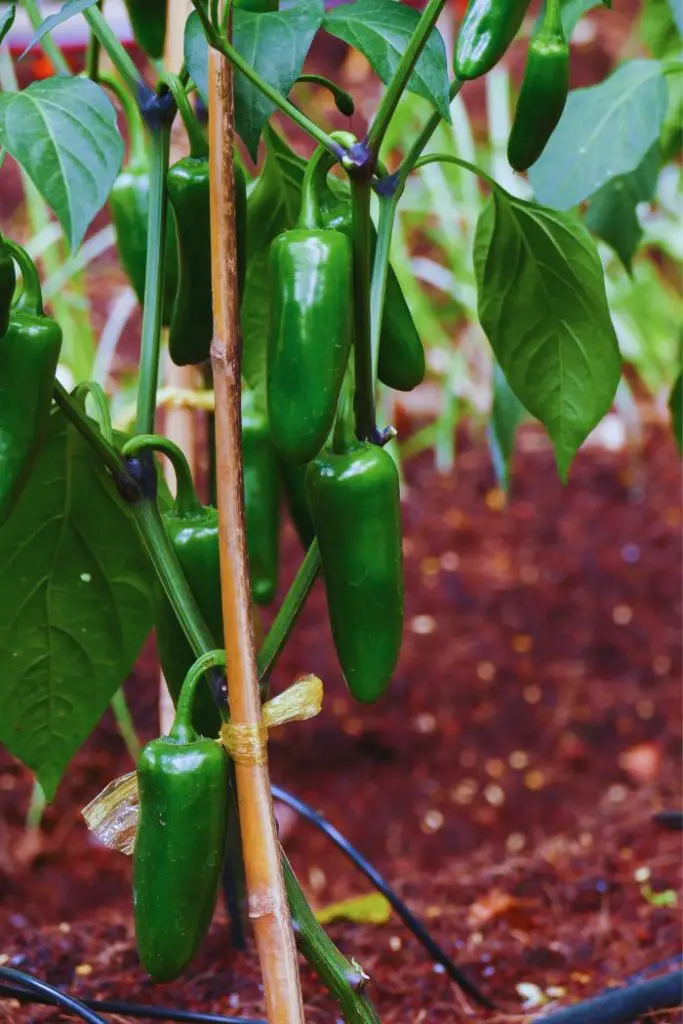
Gently twine the stems around the trellis, securing them with soft ties or clips. As the plant grows, continue to prune and train the stems to grow upwards, removing any weak or spindly growth. This will encourage the plant to focus its energy on producing fruit rather than foliage.
Pest and Disease Management
Inspect your jalapeno plants regularly for signs of pests or disease. Catching infestations or infections early on will make all the difference in preventing their spread and minimizing damage. Regular inspections will help you identify issues before they escalate, allowing you to take prompt action to control the problem.
Keep an eye out for signs of Pest Infestations, such as tiny eggs, larvae, or actual pests on the leaves or stems. Common pests that target jalapenos include aphids, whiteflies, and spider mites. If you notice any of these, treat your plants with insecticidal soap or neem oil to eliminate the infestation.
Fungal Infections can also be a problem, especially in humid environments. Look for signs like yellowing leaves, black spots, or powdery mildew. To prevent fungal infections, promote good air circulation around your plants and avoid overwatering. If you do notice fungal infections, treat your plants with a fungicide specifically designed for indoor gardens.
Transplanting Seedlings Outdoors
Once your jalapeno seedlings have reached 2-3 inches in height, with at least two sets of leaves, it’s time to harden them off and transplant them outdoors into their final growing location. This process, called outdoor acclimation, helps seedlings adapt to direct sunlight, wind, and temperature fluctuations.
To begin, move your seedlings to a shaded outdoor area for 2-3 hours a day, gradually increasing their exposure to direct sunlight over 7-10 days. This weather hardening process will help prevent shock when transplanting.
When transplanting, choose a location with full sun and well-draining soil. Dig holes that are slightly deeper and wider than the seedling’s pot, adding organic matter like compost or manure to improve soil fertility.
Gently remove the seedling from its pot, taking care not to disturb the roots. Place the seedling in its new home, backfilling with soil and watering well.
Mulch around the plants to retain moisture and suppress weeds. With proper care, your jalapeno plants will thrive in their new outdoor environment.
Harvesting and Preserving Jalapenos
After 70 to 90 days of growth, you’ll be all set to start plucking those vibrant, green jalapenos from the plant, signaling the beginning of the harvesting and preserving process. To guarantee maximum flavor and crunch, harvest jalapenos when they’re firm, glossy, and about 2-3 inches long. Gently twist and pull the pepper from the plant to avoid damaging the stems.
Once you’ve gathered your bounty, it’s time to preserve those jalapenos for future use. One popular method is freezing. Simply wash, dry, and chop the peppers, then spread them on a baking sheet and place it in the freezer. Once frozen, transfer the jalapenos to airtight containers or freezer bags for long-term storage.
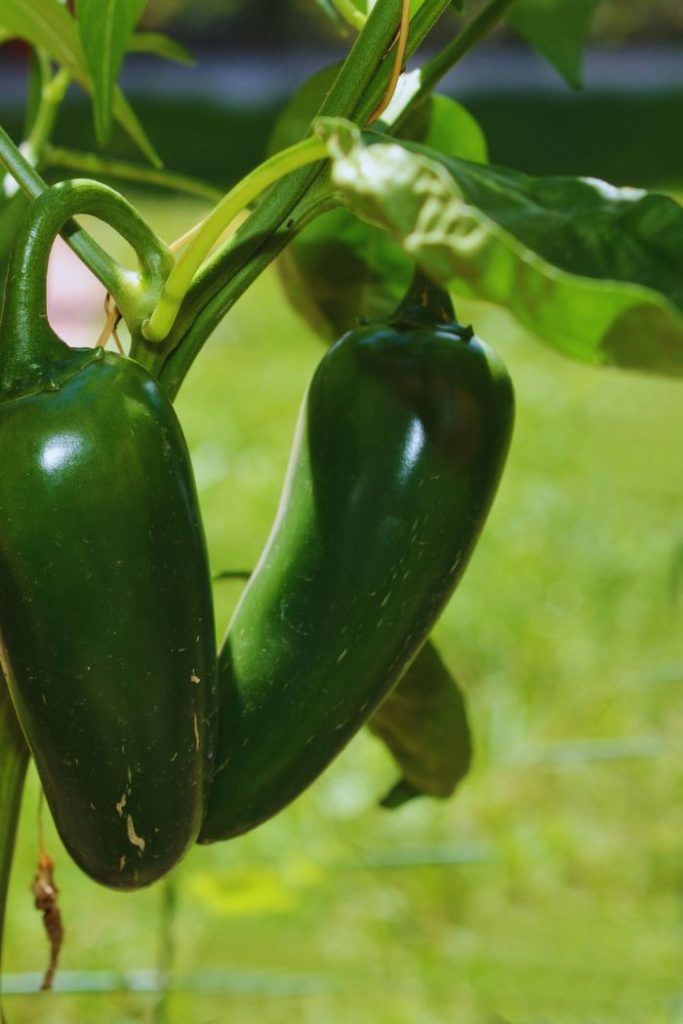
Another option is pickling, which involves soaking the peppers in a brine solution (vinegar, salt, and spices) to create a tangy, crunchy snack. You can also experiment with various pickling methods, such as lacto-fermentation or quick pickling, to find your favorite flavor profile.
Frequently Asked Questions
Can Jalapeno Seeds Be Saved From Store-Bought Peppers for Growing?
You can try saving seeds from store-bought jalapenos, but keep in mind that seed quality is often compromised, and many commercial peppers are hybrid varieties, which may not produce consistent results when replanted.
How Long Does It Take for Jalapeno Seeds to Germinate in Ideal Conditions?
When you provide ideal conditions for seed starting, you can expect jalapeno seeds to germinate within 7-10 days, with peak germination rates reaching up to 90% in temperatures between 75-85°F and consistent moisture.
Can Jalapeno Plants Be Grown in Hanging Baskets or Containers?
You can successfully grow jalapeno plants in hanging baskets or containers, ensuring a minimum soil depth of 6-8 inches and choosing a basket size that’s at least 5-7 gallons to accommodate root growth.
Are Jalapeno Plants Susceptible to Indoor Pests Like Spider Mites?
As you nurture your jalapeno plants indoors, be mindful that they’re susceptible to pesky spider mites; guarantee proper pest control by maintaining high soil quality, avoiding overwatering, and monitoring for early signs of infestation.
Can Jalapeno Peppers Be Harvested at Any Color or Only When Red?
You’ll discover that jalapeno peppers can be harvested at various color stages, each influencing flavor profiles; while green jalapenos offer a grassy taste, red ones are sweeter and smokier, with color variations impacting flavor intensity.
Conclusion
You’ve successfully grown jalapenos from seeds indoors by following the steps outlined above. Now, you’re ready to transplant your seedlings outdoors and enjoy a bountiful harvest.
Remember to harden off your plants before relocating them to their final destination.
With proper care and attention, your jalapeno plants will thrive, providing you with a spicy and flavorful crop.




